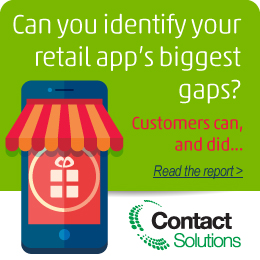 "Next person in line, please.”
"Next person in line, please.”
Imagine this phrase uttered in a bored tone by a cashier, and it might take you back to the last time you made a complex purchase in a brick-and-mortar store. Armed with product knowledge, you entered the store and found a sales person and explained what you wanted. If that person wasn’t helpful, you were referred to a manager, and you explained what you wanted all over again. From there, you were shuttled from person to person to cash register to product pick-up, each time encountering someone else who had no idea what you were there for. It’s at this point that you start to think, “If I have to return this product, will I have to do this all over again, but in reverse?” The idea alone is enough to keep you up at night.
At the advent of the e-commerce revolution, we were told that the Internet would be a great leap forward for customer support. After all, everything could be done from one place…your laptop or desktop. But did this really turn out to be true? You browse a Web site for products or services or to answer a question. If you need more help, you pick up the phone and call a contact center and tell the agent who you are and what you want. If you’re transferred, you explain yourself again. If you send an e-mail, you might wait days for a reply…a prospect that most of us find preposterous today. Sure, it’s a multichannel experience – there are lots of channels to choose from – but none of those channels seem remotely related to one another, and the process often requires carving out an hour or more of uninterrupted time. Quite frankly, it’s all starting to seem rather silly and old-fashioned to customers, mostly thanks to smartphones.
The Mobile Mind Shift
The proliferation of smartphones today has brought us something that might be called the “mobile mind shift.” Built on lightning-fast, real-time results, the mobile mind shift means that customers’ expectations have been profoundly changed. Support services once considered a cutting-edge way to attract customers from competitors quickly become part of customers’ baseline expectations. To delight customers today, it’s necessary to go further and do better.
Why Repeat the Mistakes of Traditional Customer Support in the Mobile Channel?
As we face the rise of the mobile customer experience, we risk carrying some bad habits from the Web channels into the mobile channel. When customers interact with a company through a mobile app, it’s not uncommon that they’ll need to interact with a live person at some point. In about 98 percent of cases, however, the customer must leave the app and dial a toll-free number, only to be placed into the front end of an IVR and wait on hold.
This is counter-intuitive: if a customer wanted to call you, he or she would have done so in the first place. So why should a mobile experience require leaving the mobile platform and choosing another channel? It’s a quick way to turn a smartphone into a dumb phone. If we’re designing the mobile customer experience from scratch, shouldn’t we take the opportunity to design it properly?
Where many companies fall into a trap is by designing a mobile customer experience from inside the contact center looking out through the various channels. But customers don’t really care about channels, and they don’t care about the contact center’s perspective. They simply wish to interact with you through whatever channel is most convenient for them at the time. Instead of approaching the mobile experience from the inside out, it should instead be designed from the outside in: from the customer’s perspective looking into the contact center. After all, the smartphone is their preferred channel of choice, so all modes of communication should be able to converge on that smartphone.
Mobile-First Customer Care
At Contact Solutions, we call it “mobile-first customer care.” It’s not about taking an existing disconnected customer service experience (bad habits and all) and shrinking it down for the smartphone. It’s about designing the mobile customer experience from the ground up around the way customers use their smartphones. This means understanding, for example, that the average mobile experience occurs in short bits and pieces.
Through more traditional channels such as telephone or Web chat, customers who initiate a support session are essentially chained to that session until it’s complete. If they disengage before they’re finished, they often need to start all over again. It’s frustrating and inefficient, and it simply doesn’t work on a mobile phone.
Think about the mobile phone customer who begins an interaction but is then interrupted by a trip through airport security, for example, or the demands of a small child needing help with her homework. We believe that customer shouldn’t have to start the process all over again, but instead should be able to restart the interaction where he or she left off. Unfortunately, the current conventional model for customer support doesn’t work that way, and we think that this needs to change.
In Part 2 of this post, we’ll define mobile-first customer care and discuss the critical elements of its foundation, including its ability to transcend a traditional customer support experience and allow customers to engage in a more natural way of performing tasks: stopping when it’s not convenient and resuming when it is. We’ll also discuss how the mobile-first approach creates opportunities for mobile engagement.



